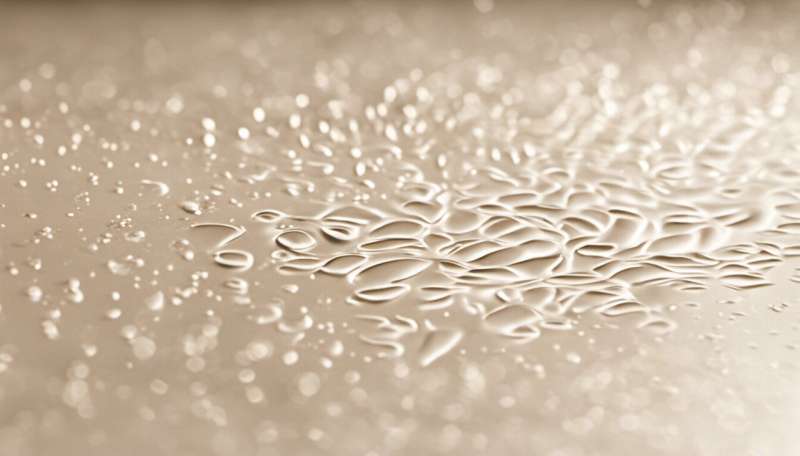No, nanoparticles in baby formula will not harm your baby

If you watched Channel 7 news this week, you would have learnt about a study commissioned by Friends of the Earth that found "potentially toxic" nanoparticles in Australian baby formula.
The study's spokesperson said calcium phosphate nanoparticles (nano-hydroxyapatite, also known as nano-hydroxylapatite) caused kidney and liver damage. That claim was, how shall I put it kindly, just a little misleading.
I have the study the spokesperson mentioned before me, which was conducted in rats, not humans.
The researchers injected calcium phosphate nanoparticles directly into rats' body cavities (instead of oral administration as happens with baby formula) at concentrations around a million times higher than found in the baby formula.
Let me quote from the study's findings:
"The normal levels of AST, ALT and A/G [liver enzymes indicating liver damage] in the n-HA [nano-hydroxyapatite] group suggested no inflammation and necrosis induced by accumulation of 100 mg of n-HA particles. In the liver function there was almost no damage. Moreover, no significant change on values of BUN and CR [urea and creatine] than the control, which also suggested n-HA has no effect on renal function."
In other words, there were no ill effects on liver or kidney function, the direct opposite of what the media reports were claiming.
Even if you injected 100 milligrams of pure nano-hydroxyapatite directly into a newborn baby's body (equivalent in baby terms to the dose given to the rats) there would be no significant effect on liver or kidney function.
The spokesperson's misleading message caused unwarranted concern. On a now deleted Sunrise Facebook post discussing this report, the commentors' concern and fear was palpable. Causing unreasonable fear is irresponsible.
Nanoparticles occur naturally
Nanoparticles have become the latest bogeyman, despite nanoparticles occurring naturally. The media report that fuelled the controversy failed to put nanoparticles in their natural biological context, provide any significant support that particles detected in milk are engineered nanomaterials, nor provide evidence of harm for the levels found.
Infant formula is based on milk, which naturally contains calcium and phosphorus (as calcium phosphates). Milk is an important source of calcium, which forms the basis of bones and teeth. The calcium and phosphates are in a complex balance between soluble and protein-bound forms.
One of the forms of calcium phosphate in milk is hydroxyapatite (also found in tooth enamel). So it is unsurprising that hydroxyapatite is found in dried infant formula, which is mainly dried milk powder.
Nanometre-sized particles of calcium phosphate also form naturally in drying milk.
Other studies have found no effect
Researchers have studied the safety of consuming hydroxyapatite nanoparticles before.
Animals who ate the nanoparticles (added to their food, as opposed to having them injected) showed no toxicity at levels well above those present in milk (up to 100 milligrams per kilogram of body weight a day for a year).
Even if you inject them (into veins or into body cavities), you need levels well above those found in infant formulas to cause damage (50 milligrams nano-hydroxyapatite per kilogram body weight in rats).
To give you an idea of how much higher this is with respect to infant formula, the highest levels of hydroxyapatite nanoparticles in any formula is 287 particles in 10 grams of formula.
Yes, that's particles not milligrams, not micrograms but actual particles. We are talking nano- to femtograms here, amounts so small it is hard to visualise. These levels are a million times or more less than levels found to have produced no effects in animals (and even lower than levels that do cause damage).
Hydroxyapatite nanoparticles have been widely developed to aid bone repair, deliver drugs and have been extensively tested. All results suggest that even levels required to be drug delivery agents, well above those found in baby formula, have no significant adverse effects.
The body dissolves the nanoparticles anyway
These nanoparticles will also not stay nanoparticles: they dissolve in the stomach fluids, allowing their calcium to be absorbed.
Newborns and very young babies' stomach fluids are less acidic than older babies and young children (pH5), but still acidic enough to dissolve hydroxyapatite.
And particles are more easily dissolved the smaller they are. So, nanoparticles are likely to be even more rapidly dissolved into their component calcium and phosphate ions than larger particles.
What's the take-home message?
There are no significant public health implications for these small crystals of naturally occurring calcium phosphates in milk-based baby formula.
The way the Friends of the Earth study results have been presented, with misleading references to irrelevant studies, has caused unnecessary fear and concern, and may lead some to abandon formula unnecessarily, with negative impacts on baby health.
This article was originally published on The Conversation. Read the original article.![]()




















